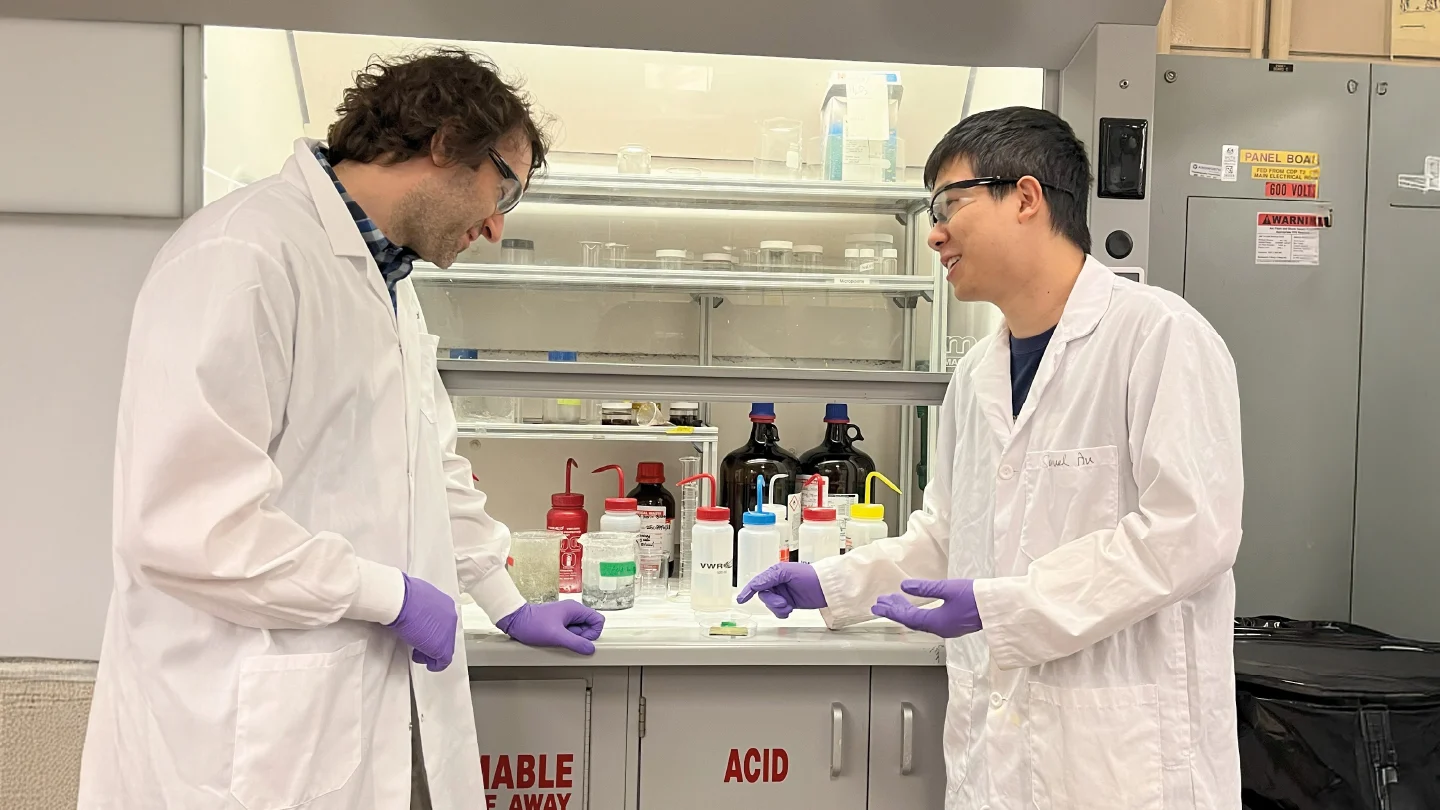Researchers from the Department of Mechanical & Industrial Engineering at the University of Toronto have introduced a novel “nanoscale fletching” approach that enhances the liquid repellency of silicone-based materials while drastically minimizing PFAS content.
In our earlier feature, we explored how Kevin Golovin, Ph.D., P.Eng., and his team developed silicone coatings that mimic the fletched feathers of an arrow on the molecular scale; a design that aligns short PFAS end groups at the chain termini to maximize repellency with minimal fluorine use. Now, we sat down with Dr. Golovin to discuss the inspiration behind this molecular architecture, the optimization of plasma-assisted CF₃ bonding, and how their work compares to current industry benchmarks in durability and environmental safety.
You can see the full research paper here:
Au, S., Gauthier, J. R., Kumral, B., Filleter, T., Mabury, S., & Golovin, K. (2025). Nanoscale fletching of liquid-like polydimethylsiloxane with single perfluorocarbons enables sustainable oil-repellency. Nature Communications, 16(1), 6789. https://doi.org/10.1038/s41467-025-62119-9
The following interview is presented unedited to preserve the original insights of Dr. Golovin, offering an in-depth look into how nanoscale molecular design is shaping the next generation of PFAS-free, high-performance coatings for textiles, cookware, and industrial applications.
What inspired the concept of “nanoscale fletching,” and how did your background in repellency engineering inform this molecular-level design?
My lab has focused on the design of silicone-based repellent materials for many years now. There is a limit to how repellent silicone chains themselves can be, but we wished to push the technology further. To do so, Samuel tried attaching very short PFAS to the silicone chains, and found that they und up near the terminal chain end. This is reminiscent of the feathers fletched to the end of an arrow, but on the nanoscale.
How did you determine that attaching the shortest possible PFAS moiety (-CF₃) to end-of-chain PDMS brushes would offer a balance between performance and minimised environmental risk?
The performance we targeted was a surface property (water and oil repellency) and therefore, almost by definition, it is the uppermost molecular groups at the surface that determine the performance. Samuel showed that we could continue to add more of the short CF3 moieties to the silicone chains but the performance did not improve. This is because they end up along the chain but not near the surface. So the amount of groups that we “fletch” to the chains is the minimum number (which ended up being 7 per silicone chain) where surface properties did not improve with the addition of further attached molecules.
What formulations and surface treatments (like plasma activation) were necessary to covalently bond those CF₃ groups to PDMS bristles, and how was process optimisation achieved?
Oxygen plasma was used to generate a small amount of reactive sites to the PDMS chains so that we could attach the CF3 groups. Samuel identified that 15 seconds of plasma was the optimal amount because the minimum surface energy (which is the property responsible for liquid repellent and nonstick performance) was first achieved with this amount of plasma. Further plasma treatment led to more CF3 groups being added to the PDMS chains, but because they did not end up on the surface, they did not improve performance further.
In performance testing (e.g. AATCC oil repellency scale), where did the PDMS + CF₃ fletched material meet or exceed expectations, and what limitations or edge-cases did you observe (e.g. abrasion, heat)?
The fletched PDMS chains were able to repel sprays of heptane and repel oil on a treated textile with an AATCC grade of 6. This is comparable to the short-chain C6 PFAS used by industry today. Though not investigated fully, abrasion is likely the area that requires further research, as grafted PDMS chains are in general not the most mechanically robust material system.
How did you measure and confirm that your coating used significantly less total fluorine than conventional PFAS surfaces, and what analytical techniques (e.g. XPS, TOF-CIC) were essential in that validation?
TOF-CIC was used to measure the total fluorine within our coating and other PFAS-containing coatings for comparison. By measuring the amount of HF generated once the entire coating has been degraded, one can determine how much fluorine was present with proper calibration. This allowed us to show that the CF3 fletched PDMS coating had ~8X less fluorine than a C6 PFAS monolayer, and 40X less fluorine than a C4 PFAS coating that is comparable to what industry currently uses.
What challenges do you anticipate when translating this nanoscale fletching process to scalable manufacturing; especially over large surface areas like cookware, textiles, or industrial substrates?
We’ve actually already ran into one since the paper was published. Our oxygen plasma step is both a batch process and limited by the size of our chamber. We received some cookware from a commercial partner but their pans did not fit inside our chamber. So scaling up or replacing the plasma activation step is definitely the biggest industrial hurdle, and then likely durability is the next challenge for certain applications where wear and tear are routine.
Looking ahead, are you exploring alternative chemistries or completely PFAS-free strategies, and what would be the key performance benchmarks those future coatings must meet to replace PFAS fully?
Yes, that is the main focus of my laboratory today. We’re investigating both variations of silicone-based surfaces as well as more exotic surface chemistries in order to innovate replacements for PFAS. Benchmarking their performance will be highly industry specific, and what it means to replace PFAS in the textile industry will be very different from what it means for the membranes inside fuel cells, the separators within batteries, or the anti-reflective materials used in the semiconductor industry. At the moment we’re targeting PFAS-containing systems where liquid repellent properties are the key metric, as that’s where our expertise lies and is therefore the lowest hanging fruit.

Hassan graduated with a Master’s degree in Chemical Engineering from the University of Chester (UK). He currently works as a design engineering consultant for one of the largest engineering firms in the world along with being an associate member of the Institute of Chemical Engineers (IChemE).



